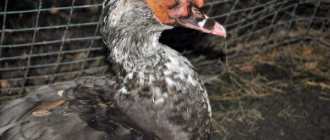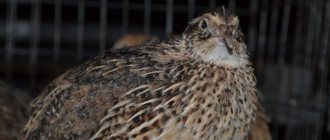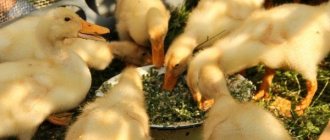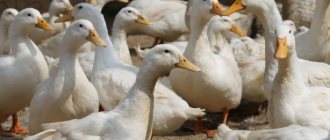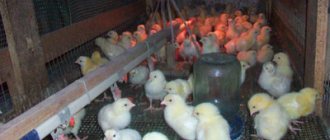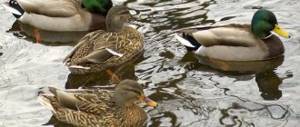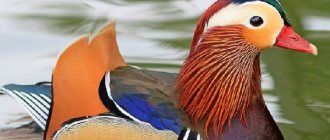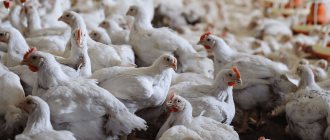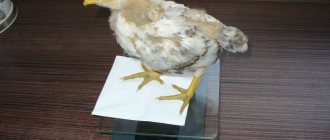At one time, we were completely, to put it mildly, sick of birds of prey; literally and figuratively. They pecked the chickens grazing in our yard in batches. Every day, always: one or two minus chickens. I had to urgently think about how to protect chickens from hawks, kites and crows.
So, probably the ideal option is a gun (and so that it is always at hand on time; and also barbed wire around the perimeter and guards on the towers). But there is no such “argument” in the economy. And, in fact, you won’t be wandering around the territory with a gun at your advantage all day long. You can’t do a lot of housework that way.
It would probably be easier if the farm were located within the city limits (although this is not a fact), but we are located far from the city, among fields and forests, so the question of how to protect chickens from hawks, kites and crows is very relevant. Especially when it comes to pullets of laying hens aged 3.5-4 months.
How we solved the problem of protecting chickens from hawks, kites and crows
We will be as brief and concise as possible. It is clear that those who constantly keep poultry in a chicken coop or let it out for walks in a small pen with a high fence do not have to fear such a misfortune.
But if this happens over fairly large areas, then, willingly or unwillingly, you have to think about ways to protect laying hens from birds of prey.
In our case, there are not very many chickens (on average, about 300-400), but grazing is quite extensive for them. Because, from my “bump” point of view, it is better to let the bird have more freedom in the sun, grass and fresh air than to throw a couple of extra kilograms of vitamins or premixes into its food.
Accordingly, the bird with joyful cries, from morning to earlier, flies out (runs out, splashes out) into the street; begins to frantically chase flies, beetles, grass and worms. And now, here they are - some sitting around in the trees, some circling nearby in the sky. Also, predators gathered for breakfast.
I had to “dive” into reading various publications in order to find effective ways to protect chickens from hawks, kites and crows. And of course, first of all, I paid attention to the old proven methods.
Since it was not intended to use any super-super modern methods - firstly, due to budget limitations; secondly, who tested their effectiveness and can really confirm the correctness of the choice?
Here is a working way to protect poultry from hawks and kites
The result of all the research was that many sources, regardless of each other, advised using certain shiny objects, such as glass, mirrors, etc., as the main protection for chickens from hawks, kites and crows.
For our part, we decided not to limit ourselves only to reflective items.
In addition to this protection from birds of prey, we stretched not a thick white nylon rope around the entire perimeter of the chicken run, making something like a cobweb (you can just stretch the mesh), but in the part where the chickens walk, we additionally stretched the mesh.
The entire structure described above was distributed on long, not deeply dug poles, arranged so that normal tension of the rope and net could be ensured.
The result of protecting chickens from hawks, kites and crows
Currently, for more than two years now, the birds of prey are extremely disappointed by our “unfair” actions and show general disapproval with corresponding cries addressed to the owners of the farmstead.
However, there are some caveats that you have to pay attention to:
- in the absence of wind, when the discs do not spin on the ropes (which does not happen so often, but it does happen), you have to keep an eye on the chickens;
- No matter how you tie the disks, they periodically become untied and you have to re-attach them;
- some discs begin to peel off over time and have to be replaced with others with a good coating (probably, as an alternative, you should think about New Year's tinsel and Christmas tree decorations)
The costs of constructing protection for hens and chicks from hawks, kites and crows were actually limited only to the time spent and one’s own labor. The design budget did not affect the pocket in any way - all the “ingredients” were in stock and previously had the status of “abandoned items.”
If anyone has additions or clarifications, or currently unresolved questions, the comment box below the article is active. Ask. Please check. The only thing is please, comments and suggestions are welcome in a reasonable and constructive form, it will be useful for yourself and others.
To come in
By logging into LiveJournal using a third-party service, you accept the terms of the LiveJournal User Agreement
- Recent Entries
- Archive
- Friends
- Profile
- Memories
Simulated attack
To protect your garden from bird attacks, you can regularly independently imitate an attack on feathered pests. Every time a flock arrives, you need to make a loud noise.
Birds' greatest fear is caused by their predatory relatives - for example, a falcon or a hawk. Placing such a pet at home will be quite problematic. But you can use the loud sounds that these predators make.
Birds cannot tolerate a variety of loud and harsh sounds. Therefore, a ratchet or gas gun is often used. This will help get rid of birds within a one kilometer radius.
How I scared the hawk away
She promised to tell me about the hawk. About this one, who is in the photo. Here I am telling you.
We started feeding forest birds almost as soon as we bought the house. Even before the move, they set up a dining room for them on a pine tree near the fence. It soon became clear that with our strong winds it is more convenient to pour the food directly onto the windowsill. At first, only titmice flew in - a lot of big tits, a few blue tits and a solitary chickadee. But soon news of the opened cafe spread throughout the forest. Greenfinches, bullfinches, siskins, and woodpeckers appeared. In spring there are a couple of bramblings, finches, and even a blackbird. Every day there were more and more visitors. Especially greenfinches. Once, at one time, I managed to count twenty greenfinches sitting on the windowsill. And chewing ones. That is, like sprat in a jar. There was simply nowhere to sit. Another time, a passing flock of greenfinches hovered over the regulars like helicopters, waiting for a seat to become available. There are forty to fifty birds at a time in total. The migrants ate and flew away, but the old-timers know that the cafe is open around the clock. There is a separate story about the regulars of our cafe. We began to recognize many of them by sight. Watching the interaction of feathered visitors will be cooler than TV series. 
But now the story is about a hawk. Naturally, our cafe attracted the attention of criminal structures. With such an influx of visitors, sooner or later a racket was bound to appear. And he appeared.
At first I couldn’t even identify who it was. It flashes like a bullet, flashes and disappears. The birds are scattered. One minute the cafe was crowded, and then a robber rushed by - and it was empty for half an hour. I go out onto the balcony, and titmice jump out from all the secluded corners. They hid. Then he realized that no one would rip his tail out for his crimes, and he began chasing the poor birds right in front of me. And then he became completely impudent - he would sit somewhere nearby and wait. As soon as the people in the cafe arrive, he dives straight onto the windowsill. It was then that we managed to see him. It turned out to be a sparrowhawk.
And these are such comrades - impudence beyond the bounds. In cities, they sometimes even fly into the windows to rip a canary or a parrot out of its cage. And if such a one gets into the habit of going to the feeder or stealing chickens, then he’s on guard. And what’s most unpleasant is that our visitors to the forest cafe began to panic against the windows because of this robber. I covered the windows with tulle, but it didn't help. One bullfinch was killed by glass. The hawk itself crashed into the window a couple of times with all its might. In general, I feel sorry for him too. If he had been injured, we would have treated him. Even though he is a villain.
I was thinking about how to ward off the evil one. It is believed that the most reliable method is to catch and release. He will be so scared of being caught that he won't come back. And the second method, which I didn’t really believe in, was psychological. I decided to try it. I drew two huge yellow eyes on cardboard and stuck them on the window. Right above the windowsill where our cafe is. Literally an hour later I saw a hawk sitting about three meters from my art. I decided it didn't work. However, from that very moment the hawk is no more!
You can talk a lot of clever scientific words about the behavior of animals, about the behavior of this particular hawk in these specific conditions. Or you can say it simply. He felt UNPLEASANT. Because big yellow eyes are staring at him. It doesn't matter whose. But they stare. And it’s unpleasant.
And for about a month and a half now, our cafe has been living a calm, measured life. A gray flycatcher hits a woodpecker on the head - and the woodpecker doesn’t even notice it. But when the woodpecker flies away, the flycatcher is delighted with its mega-coolness. Greenfinches and bullfinches arrive to rummage through the husks of the seeds and take a break from family problems. The little siskins quietly settle down in the corner - they are small. They snack and look at the big ones. By the way, I have never seen anyone drive away siskins. In general, life is getting better. 
Posts 1 page 30 of 35
- Author: Medvedev M D
- Active participant
- Registered: 12-03-2018
- Invitations: 0
- Posts: 1917
- Respect: [+140/-3]
- Positive: [+0/-0]
- Time spent on the forum: 2 months 0 days
- Active 6 minutes
Help is needed. When a hawk or falcon causes damage, it’s offensive, but it’s clear they have no other way; in order to survive, they need to hunt. But when crows or magpies are rampant, this is chaos that must be stopped immediately. Friends, share your experience in dealing with this evil.
- Author: Oleg Borisovich
- Administrator
- From: Moscow
- Registered: 12-03-2018
- Invitations: 0
- Posts: 1720
- Respect: [+86/-1]
- Positive: [+172/-13]
- Gender: Male
- Age: 55 [1965-05-22]
- Spent on the forum: 1 month 7 days
- Last seen: Today 19:59:22
Greetings to all! There have been problems with crows. We managed to catch one, she screamed so much that all her relatives gathered. Very cunning birds. They constantly change their attack strategy. Observed, distracted, attacked. Just special forces. Until the young ones fly confidently, only constant presence helps.
- Author: DeniX93
- Active participant
- Registered: 14-03-2018
- Invitations: 0
- Posts: 358
- Respect: [+46/-0]
- Positive: [+6/-0]
- Time spent on the forum: 6 days 17 hours
- Last seen: Today 19:28:19
Help is needed. When a hawk or falcon causes damage, it’s offensive, but it’s clear they have no other way; in order to survive, they need to hunt. But when crows or magpies are rampant, this is chaos that must be stopped immediately. Friends, share your experience in dealing with this evil.
I support the question ✋
